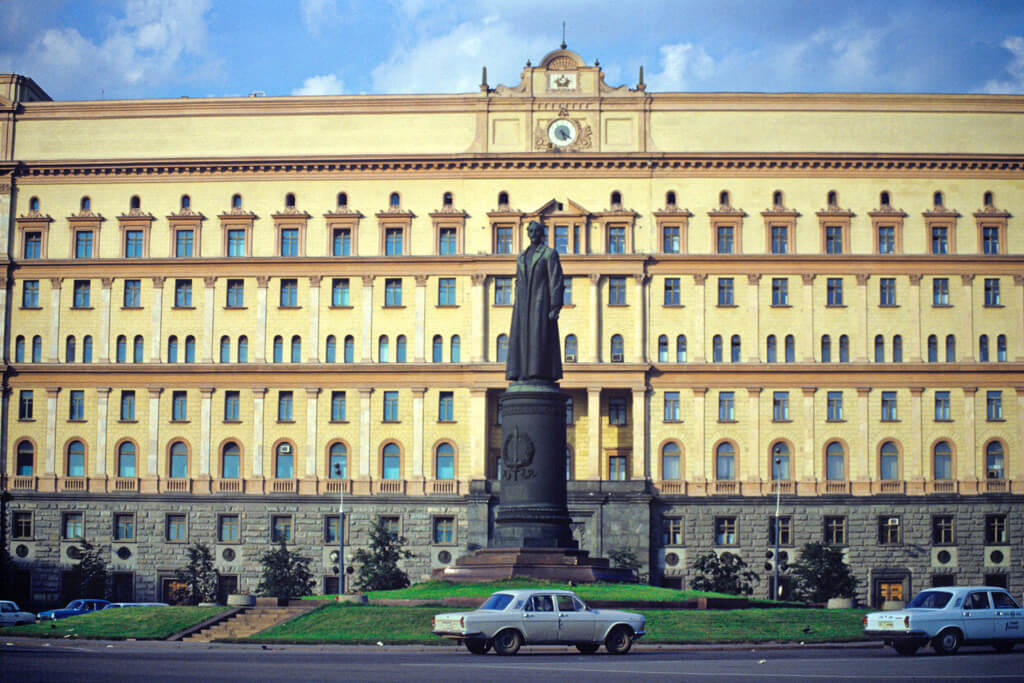The Life and Loss of Daniel Lewin, Web Genius and 9/11’s ‘First Victim’

Image by Courtesy of Akamai
Those that knew him say Daniel Lewin could have been in league with Bill Gates or Steve Jobs had his life not ended on September 11th.
But today, 15 years after the attacks, Lewin remains largely unknown to the public, even as the technology he invented affects billions of people around the world.
Lewin, who died aboard American Airlines flight 11, was a singular figure in life and in death. A Jewish American-Israeli who served in an elite army unit of the Israel Defense Forces, he later enrolled in the Massachusetts Institute of Technology and went on to found Akamai, a content delivery network that changed the Internet as we know it.
Just a few short years after Akamai’s launch, Lewin, 31, boarded a flight from Boston to Los Angeles for a business meeting, where he died along with 86 other passengers and crew members. He is thought to be the first victim of the attacks, probably stabbed by Satam al Suqami, one of the hijackers, before the plane was steered into the north tower of the World Trade Center. According to the 9/11 Commission’s report, Lewin may have even tried to stop the attacks.
Lewin’s life story was recounted in the 2013 book “No Better Time” by journalist Molly Knight Raskin. After years of keeping silent in grief, Lewin’s family and friends opened up about his remarkable, short life. The book raised Lewin’s profile and his friends’ hopes that one day he will become a household name.
“What Danny did in his short 31 years is exponentially more impressive than anyone else in human history has done in 31 years, save Mozart and some very well known historical figures,” said his best friend, Marco Greenberg, a public relations specialist. “If anyone deserves a feature film on his life, it is him.”
Lewin grew up in a suburb of Denver, Colorado, the son of a psychiatrist and a pediatrician and one of three brothers. When he was 14, his father, Charles Lewin, moved the family to Israel out of Zionist ideals. The family had a difficult time assimilating at first, and were voted “least like to stay” by the other new immigrants in their absorption center, according to Knight Raskin’s book.
Lewin enrolled in a technology high school on The Hebrew University of Jerusalem campus. Bored and isolated at school, Lewin found a community at Samson’s, a gym in downtown Jerusalem which catered to Israelis and American immigrants. It was there in 1986 that Lewin met Greenberg, another American who was in Israel for a Hebrew University summer school program.
“I walked in the gym the first day of summer school and someone pointed out a kid from America squatting a ridiculous amount of weight,” said Greenberg of Lewin.
Though Greenberg was six years his senior, the two became close friends. When Greenberg returned to Israel a year and a half later the two toured all over Israel, volunteering at a kibbutz, traveling to Tsfat and partying in Tel Aviv and Jerusalem. By this time, Lewin had overcome his mixed feelings and was an Israeli patriot. They spoke “heavily accented” Hebrew to one another, said Greenberg. “This is how bonded we were, him more so than me, to the country.”
After high school, Lewin volunteered to become a soldier in Sayeret Matkal, the elite Israeli counter terrorism unit. To become a part of the unit, soldiers must pass grueling physical and emotional tests. When Lewin made it through, it didn’t surprise Greenberg. Lewin was “the most formidable person I have ever met,” he said.
According to Lior Netzer, a friend in the unit who would later go on to work with Lewin at Akamai, Lewin approached the role with unusual vigor, earning the nickname “Brontosaurus.” He recalled one training drill in which Lewin seemed to be laboring under the weight of his pack. It turned out that he had stuffed it with three times the number of bullets that the other soldiers were carrying, just to push himself further. Lewin eventually became an officer in the unit.
After his army service, Lewin enrolled in Israel’s institute of technology, the Technion, to study electronic engineering. Netzer also studied electronic engineering at Tel Aviv University, and a friendly competition developed between the two. Netzer remembered Lewin showing him a software manual he had written for the Sun Microsystems computer company which was at the level of technical writing one might find at Microsoft or Apple.
“He was so focused,” said Netzer. “He had that start.”
Lewin met his wife, Anne, an immigrant from Belgium, at a friend’s house in 1990. The two became engaged after just six months, and were married when Lewin was just 21 and Anne was 23. They later had two sons, Eitan and Itamar.
Lewin’s sons did not respond to interview requests from the Forward for this article.
In 1996, Lewin moved his family to the United States to begin graduate school at MIT’s Laboratory for Computer Sciences. It was there that he met Frank Thomson Leighton, his professor and mentor with whom he would later found Akamai. According to Knight Raskin’s book, their relationship was something of an intellectual love affair. Leighton’s serious nature complemented Lewin’s enthusiasm and vice versa.
At MIT, Lewin began to research a solution that what had been termed the “World Wide Wait.” Tim Berners-Lee, the inventor of the World Wide Web and an MIT professor, had predicted that the web would become congested as its users multiplied, causing web pages to slow and crash. Working on a team with Leighton and others, Lewin came up with an algorithm to route and replicate content over a large network of servers that would speed up the web.
In 1997, Lewin and his team explored the possibility of turning the technology into a business in order to enter a $50,000 entrepreneurship competition at MIT. Though the team didn’t win, as one of six finalists it drew the interest of investors. In 1998, Leighton and Lewin became cofounders of Akamai, which is a Hawaiian word meaning “intelligent” or “clever.”
Lewin gained a reputation as the office’s taskmaster, a tough but inspiring figure who would tell his employees that they were “behind” as a way to get them to speed up their work.
“He was very passionate about beating the competition,” said Netzer, now the vice president and general manager of Akamai’s emerging mobile business unit. He recalled Lewin walking around the office with a doll, which he told employees represented the competition. “What are you going to do to this doll?” Lewin would ask them, rhetorically, before ripping its head off.
As Knight Raskin’s book recounts, Akamai quickly grew as it began working with companies like the Washington Post and Disney, ensuring that their web sites were able to handle increasing traffic without a glitch. The company went public on October 29, 1999. At the end of the day, it was selling shares at $145, a 458% increase over its initial offering price and the fourth-largest first day increase ever at the time. Lewin, who not long before was cleaning the apartment complex his family lived in to pay rent, became a billionaire overnight.
But the volatile market created instability at Akamai and its first few years were marked by layoffs as the management worried over the company’s long term viability. Akamai’s stock was at $3 on September 10, 2001 the day before Lewin boarded the flight to Los Angeles to meet with unhappy investors.
Greenberg said it never occurred to him that Lewin was on the plane. He lived in New York City at the time and had called his staff to his office in upper Manhattan so that they could get as far away from the attack scene as possible. Jonathan Seelig, another Akamai founder, visited Greenberg to tell him that Lewin had likely been killed; the news was later confirmed by the head of the company.
“It made what was already the worst day I could have imagined just indescribably tragic,” said Greenberg. “It was a moment I will never forget.”
As the company was reeling from its loss, it was also facing unprecedented demand from its clients. As Knight Raskin points out, September 11th saw record traffic for many news sites, and Akamai was called upon to keep web sites up and running even as its employees were grieving.
From its rocky beginnings, Akamai has flourished and now counts more 6,100 employees. In 2015, its revenue was 2.2 billion, up 12% percent from the previous year. In 2012, Akamai “finally realized Lewin’s dream of a presence in Israel,” wrote Knight Raskin, when it bought the Israeli company Contendo.
“Danny would be smiling down seeing the company and the thousands of employees at Akamai,” said Greenberg. “That is the biggest legacy of all.”
Contact Naomi Zeveloff at [email protected] or on Twitter @naomizeveloff
A message from our Publisher & CEO Rachel Fishman Feddersen

I hope you appreciated this article. Before you go, I’d like to ask you to please support the Forward’s award-winning, nonprofit journalism so that we can be prepared for whatever news 2025 brings.
At a time when other newsrooms are closing or cutting back, the Forward has removed its paywall and invested additional resources to report on the ground from Israel and around the U.S. on the impact of the war, rising antisemitism and polarized discourse.
Readers like you make it all possible. Support our work by becoming a Forward Member and connect with our journalism and your community.
— Rachel Fishman Feddersen, Publisher and CEO
























